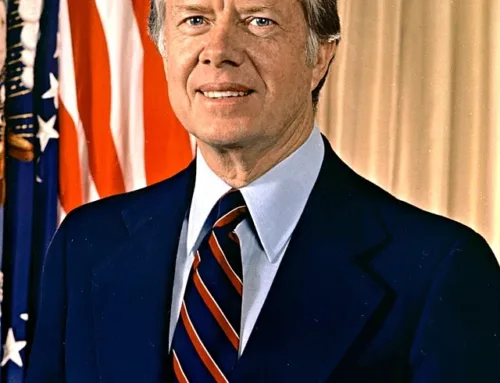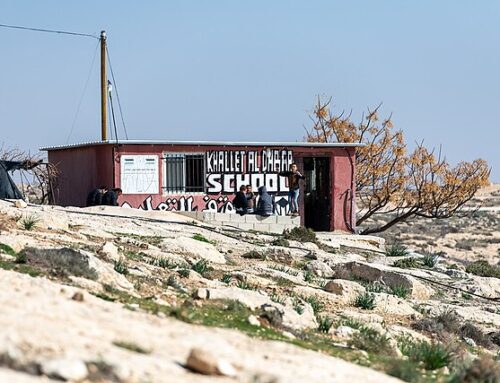 Throughout the 2 ½ weeks of Egypt’s continuing democracy revolution, which has reached a crescendo with Hosni Mubarak’s resignation just hours ago, Israel’s senior political and military echelons have maintained a cautious approach, and a relatively low profile.
Throughout the 2 ½ weeks of Egypt’s continuing democracy revolution, which has reached a crescendo with Hosni Mubarak’s resignation just hours ago, Israel’s senior political and military echelons have maintained a cautious approach, and a relatively low profile.
On the one hand, Binyamin Netanyahu and others have professed nominal support for the cause of democracy in Egypt and the rest of the Arab world. Such language is requisite for an Israel that touts democratic values as one of the underpinnings of American-Israeli friendship. It is also in keeping with Netanyahu’s support for the neoconservative argument promulgated by his ally, Jewish Agency Chair Natan Sharansky – that Israel will never enjoy true peace with the Arab world until the latter develops true freedom and democracy.
But alongside, and more prominent than, the obligatory pro-democracy formulations, Israeli officialdom has repeatedly stressed its concern that post-Mubarak Egypt could be dominated by a hostile Islamic regime (a la Iran) and/or turn away from its strategic cooperation with Israel – the worst-case scenario being an abrogation of the two countries’ 1979 peace treaty.
That treaty, brokered by President Jimmy Carter, still stands as the most successful example of the ‘land for peace’ diplomacy that slowly developed in the wake of the June 1967 Israeli-Arab war. The treaty is also, arguably, the greatest diplomatic achievement in Israeli history, removing, as it did, the leading member of the Arab world, and Israel’s most powerful enemy, from what Israel calls its “circle of hostility”.
The negotiations that led to the treaty began in May 1977, but the accord was actually 12 years (or more) in the making. As a result of its military victory in 1967, it will be recalled, Israel took control of large swaths of territory, including Egypt’s Sinai Peninsula, a land mass three times the size of all of pre-war Israel.
Although initially willing to trade all of Sinai for peace, Israeli policymakers soon became enamored with the great land buffer that now shielded Israel from its decades-old foe, and they developed the new strategic goal of permanently retaining the eastern section of Sinai under a peace agreement. This was the background to Defense Minister Moshe Dayan’s famous dictum, “Better Sharm-el-Sheikh without peace than peace without Sharm-el-Sheikh”: The new border that Israel envisioned would include this seaside resort town (whose control would guarantee vital Israeli access to the Red Sea), along with additional portions of the peninsula.
No longer willing to withdraw to the 1967 borders, Israeli policymakers, led by Prime Minister Golda Meir, snubbed a 1971 effort by Egyptian President Anwar Sadat to reach the kind of full-withdrawal agreement that would be signed by decade’s end. Israel’s rejectionism, most historians agree, is what prompted Sadat to launch the war of October 1973, which he regarded as an extension of diplomacy and a way of dislodging the deleterious status quo that had taken root.
Sadly, Sadat proved to be correct in his analysis: The shock to Israel’s body politic produced by the Yom Kippur War, and the smashing of Israel’s self-image of invincibility, began to produce the diplomatic movement that his earlier backchannel messages had not. Through the offices of the Kissinger-led State Department, Israel under PM Rabin began, in 1974 and 1975, to effect a series of interim withdrawals from Sinai, in return for Egypt’s agreement to end the state of belligerency – a deal that was buttressed by Israel’s receipt of significant American political, military and economic assurances.
The peace treaty of 1979 was thus the final stage in a process of evolutionary peacemaking. In the accord, Israel, now led by Likud Prime Minister Menachem Begin, committed to withdrawing “all its armed forces and civilians from the Sinai” back to “the recognized international boundary between Egypt and the former mandated territory of Palestine”. In return, Egypt moved from non-belligerency to full recognition of Israel’s “sovereignty, territorial integrity and political independence”. Further it agreed to the termination of any economic boycotts, the establishment of diplomatic, economic and cultural relations, and a policy of open borders.
Of particular strategic importance to Israel, Egypt recognized Israel’s right to “unimpeded and non-suspendable freedom of navigation and overflight” in the Gulf of Aqaba and Strait of Tiran, leading to the Red Sea: This was a major step forward, since Egypt’s closure of the Strait to Israeli shipping had been one of the causes ratcheting up pre-war tension in both the 1950s and 1960s. Similarly, Egypt also recognized, “the right of free passage through the Suez Canal …through the Gulf of Suez and the Mediterranean Sea”.
Last, but not least, the two sides agreed in their treaty to a series of “limited force zones” on both sides of the border. This reduced the mutual military threat by restricting both the quantity and quality of the armed forces that each side could maintain close to the border region.
(This last provision satisfied Israel’s insistence not to duplicate its previous withdrawal from Sinai in late 1956 and early 1957. In October-November 1956, Israel had captured Sinai for the first time, as part of a coordinated Israeli-British-French attack on Egypt – but was soon forced by a fuming American administration (and a Soviet Union threatening military intervention) to withdraw unconditionally.)
The Israeli-Egyptian peace treaty has shown incredible stability for the past 32 years, even during periods of conflict and strife, such as Israel’s 1982 invasion of Lebanon, or the 2008-09 Gaza war. So it is perfectly understandable that Israel’s government would try to ensure that future Egyptian governments will continue to honor it.
Ironically, the same Likud party that now hails the peace with Egypt was once much less sanguine about it. As Begin prepared to submit the treaty to Israel’s Knesset in 1979, he faced a party mutiny, and required the support of the opposition Labor party to ensure its ratification. Likud had never advocated more than a token pullback from Sinai, nor had Labor itself ever come out in support of full withdrawal for full peace: At the time, we need to remember, major sections of both parties still subscribed to the traditional Israeli narrative that depicted Egypt as ideologically committed to the Jewish state’s destruction.
Despite the fact that historians have since shown the reality to be much more complicated than that; and in spite of 32 years of stable (if tepid) peace with Egypt, the narrative still lives on in the hearts of a great many Israelis. This explains (but does not completely justify) Israeli emphasis of strategic concerns over the cause of human rights.
As the Egyptian revolution moves forward, it is to be hoped that Israel’s support for its neighbor’s democracy will become more full-throated, and that Egypt’s emerging leaders will express a commitment to the strategy of peace initiated by Sadat four decades ago.
Shabbat Shalom,
Ron Skolnik
Executive Director
Meretz USA
February 11, 2011






Leave A Comment